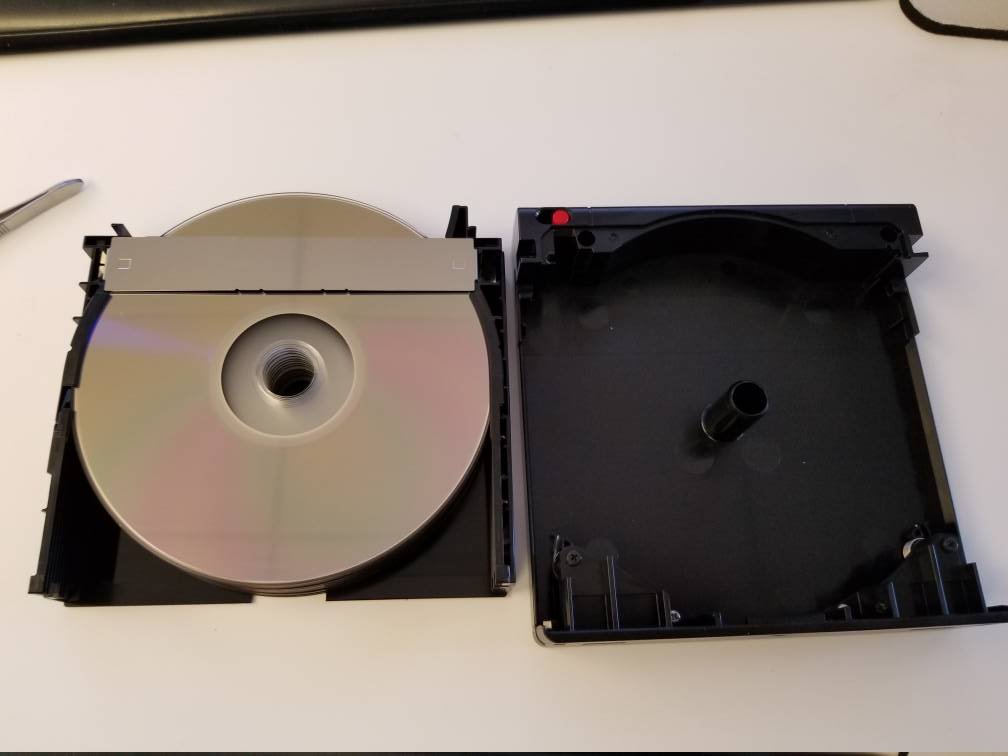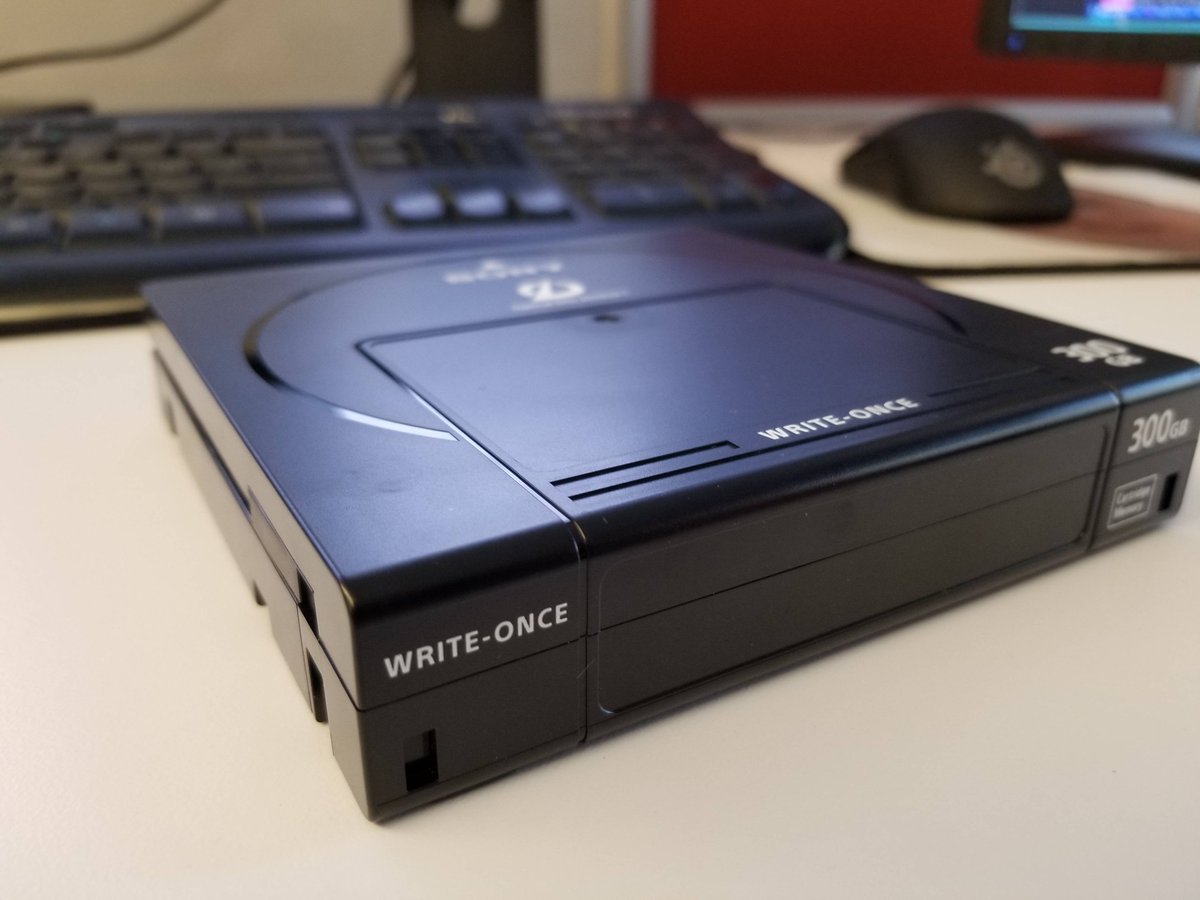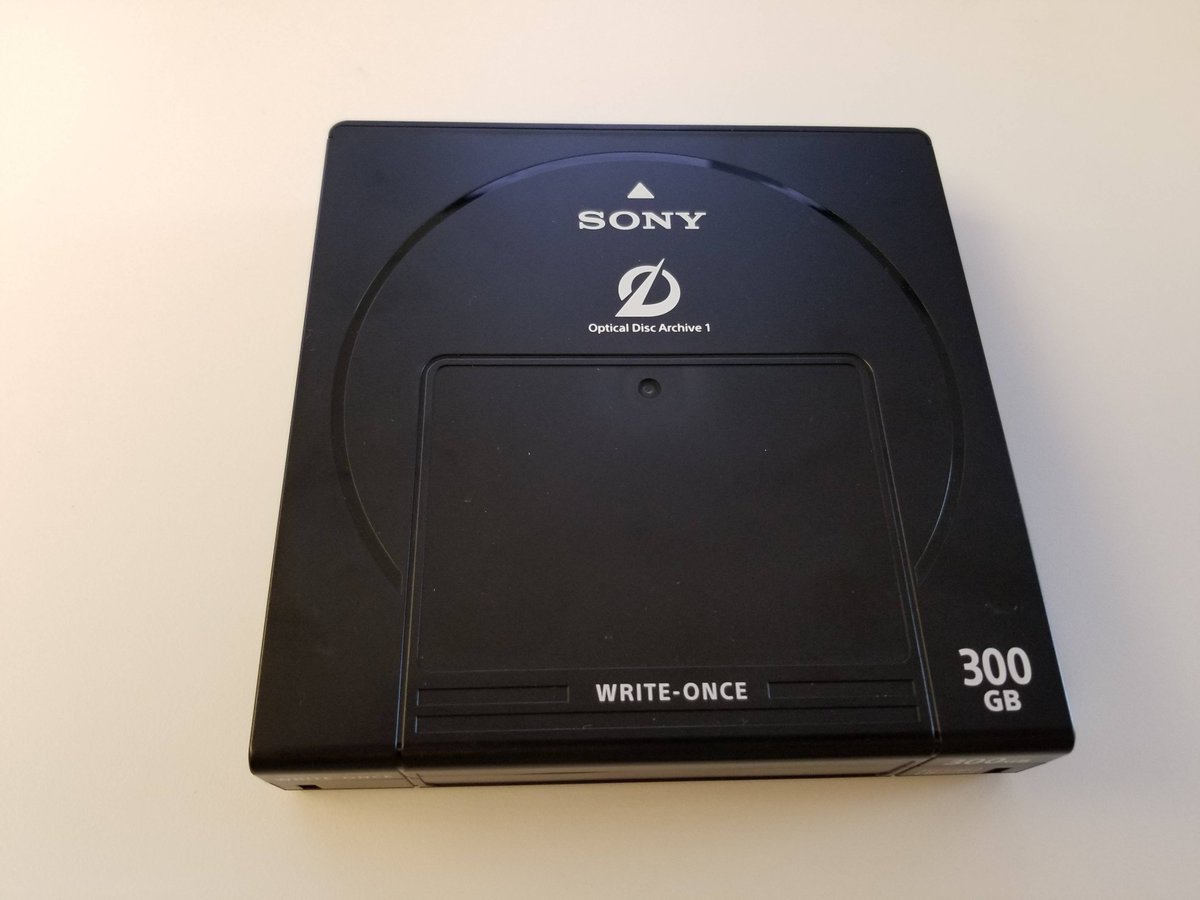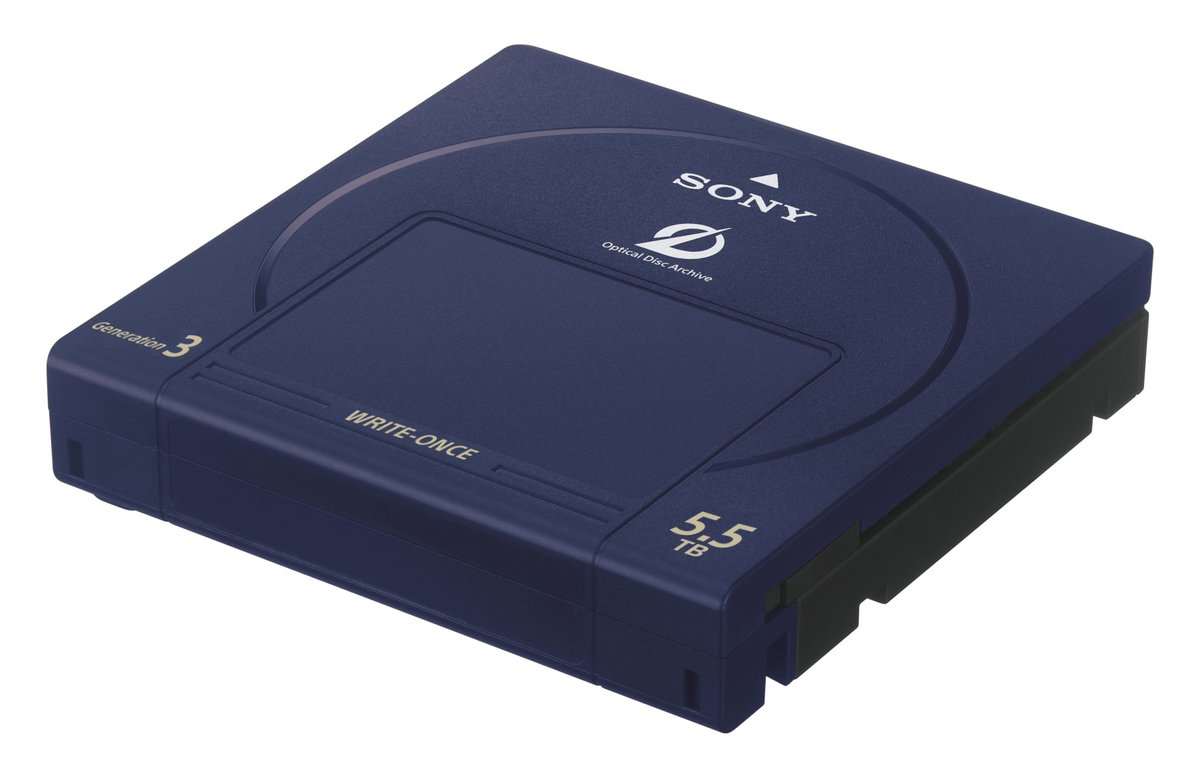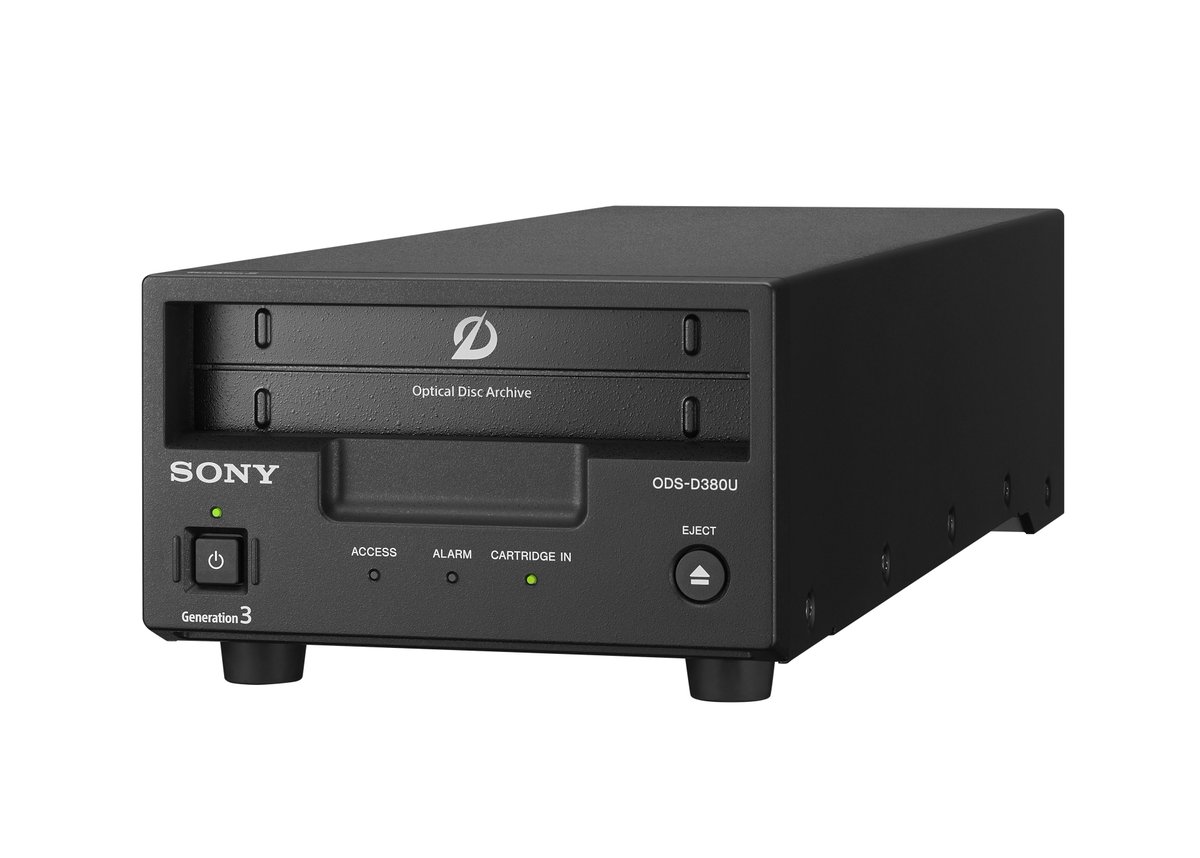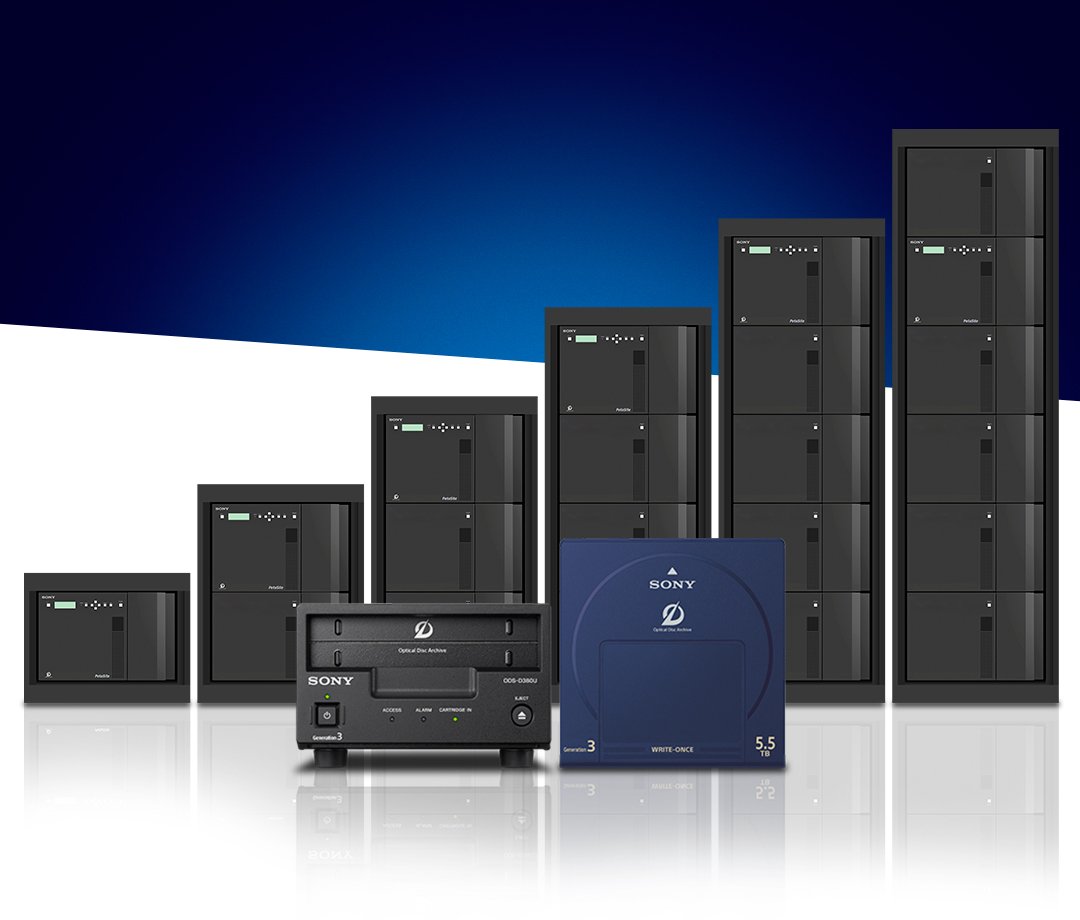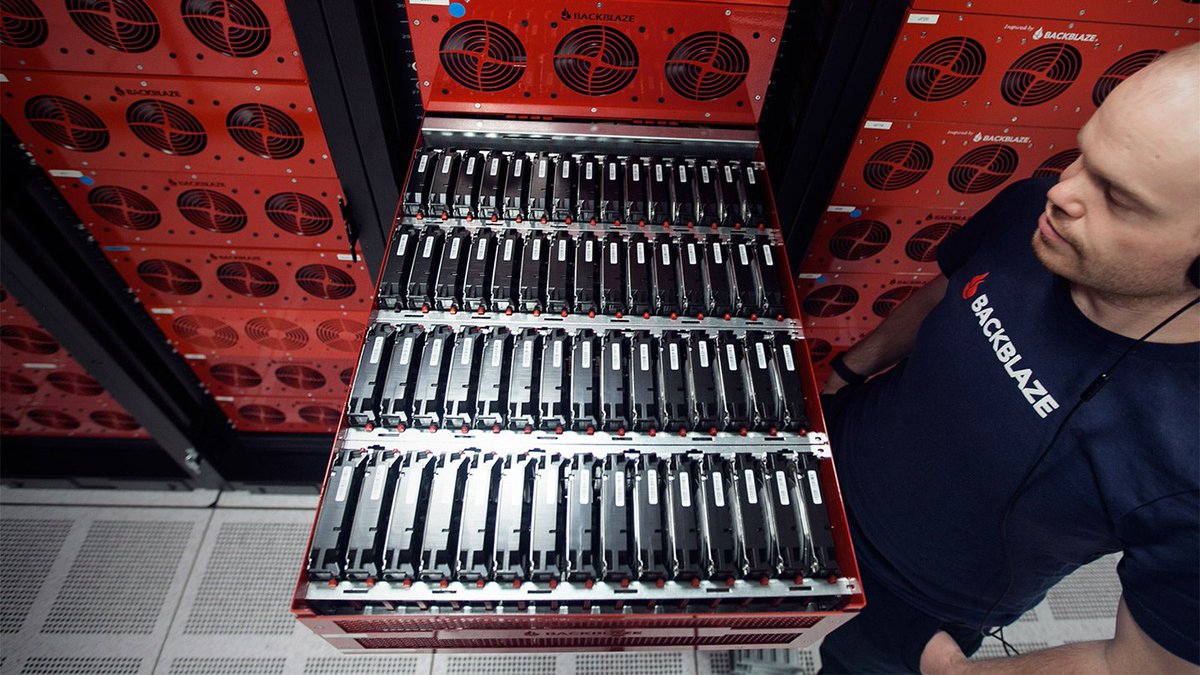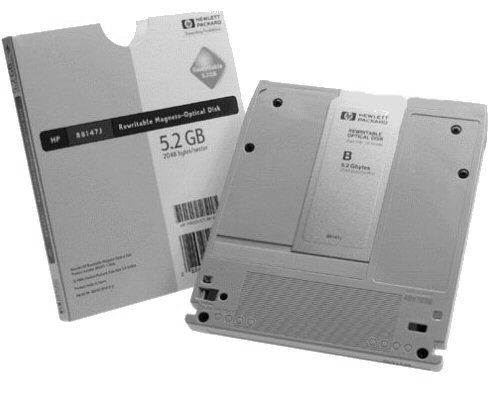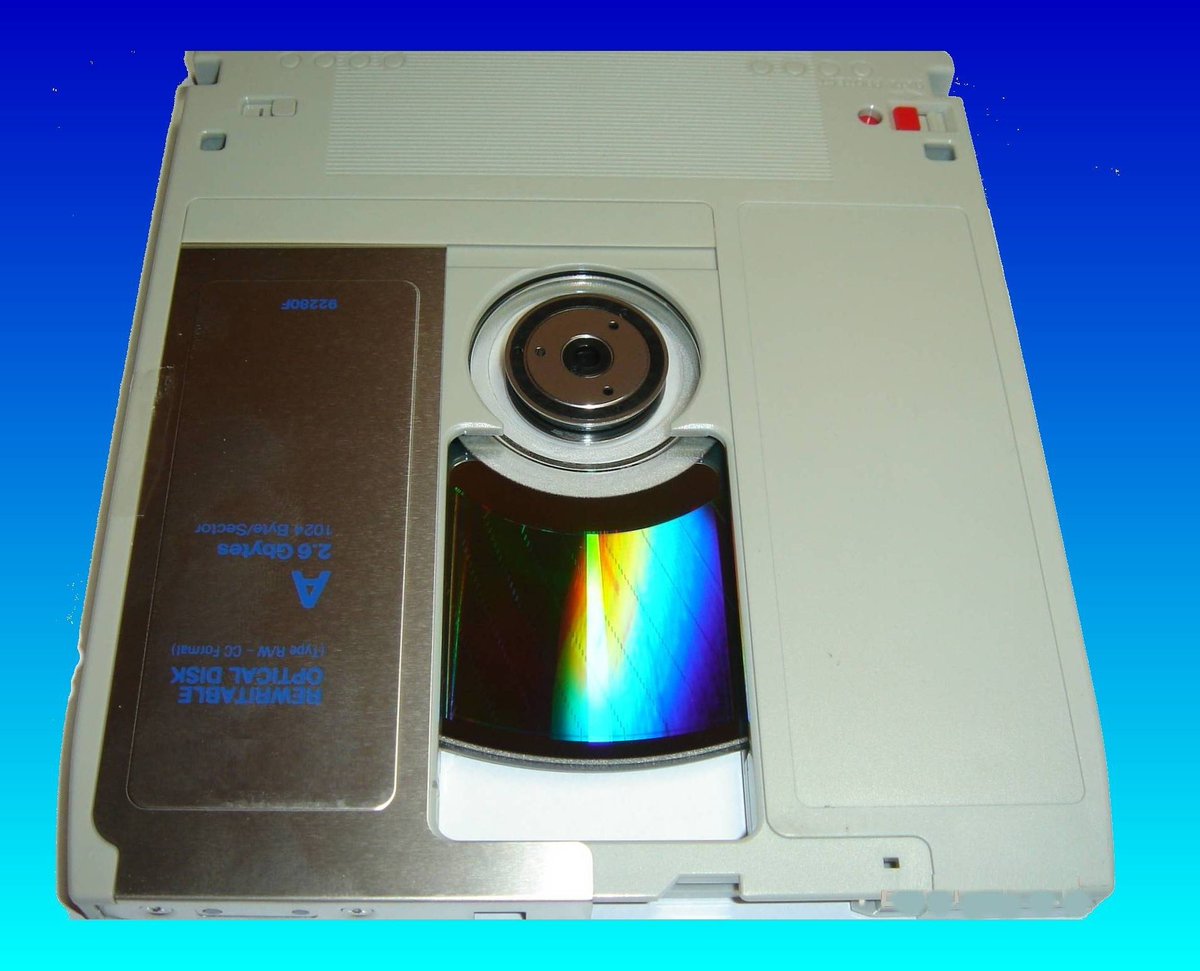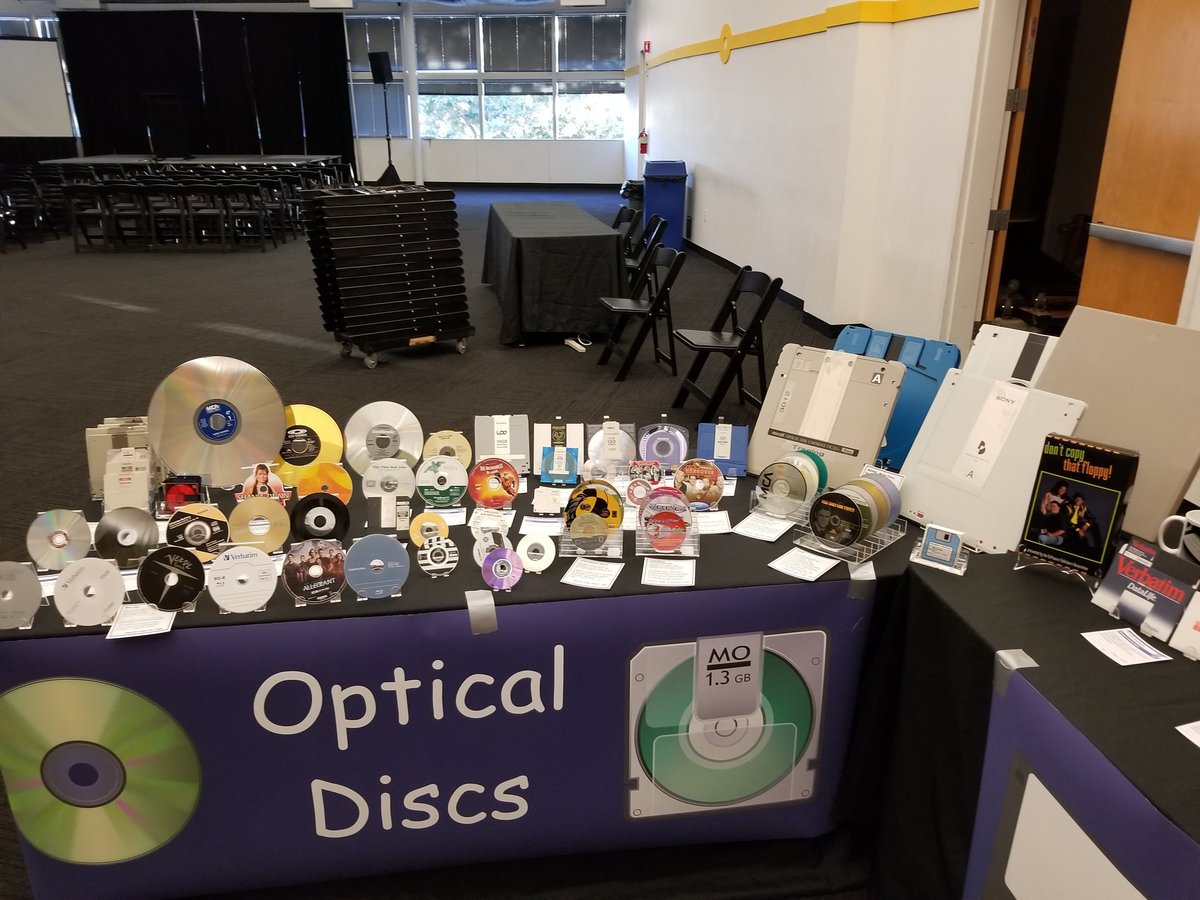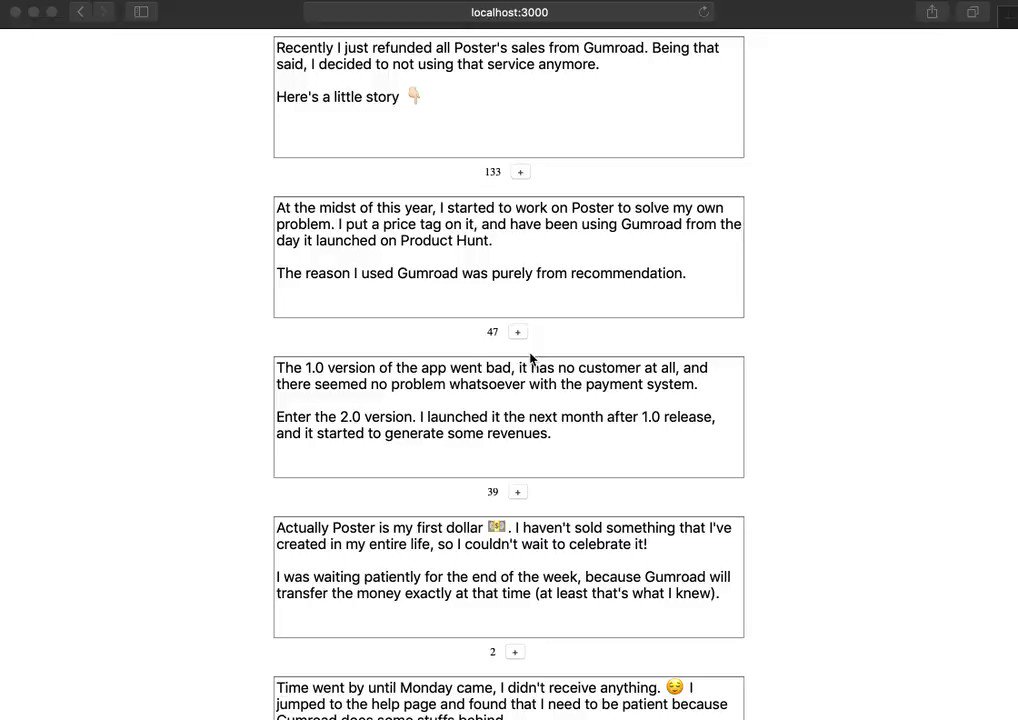because if you open it up (which you should never do. trust me on this one)
it turns out... it's blu-ray.
it's a big STACK of blu-ray
And the idea is that Sony built some very complicated drive which you can slot this cartridge into, and it'll open it up and grab out the right disc and just read/write that one
then when you hit the eject button, it shoves the discs back in and closes up the case, and hands you the cartridge.
So Sony launched this thing at 300 gigabytes in 2013.
They've been launching new updates every couple years, with the latest version being the ODC5500R (launched in 2019), which is a 5.5tb write-once cartridge.
reportedly it's extra-stabilized blu-ray discs, at that. so these will last longer than your regular cheapo BD-R discs
plus optical media (especially recordable media) has always been vulnerable to UV light, and guess what? this one is always in a cartridge or a drive. so I'm sure that helps with the longevity.
So you can get stand-alone drives for these, but I suspect that's not really where it was designed for.
This is a medium designed for things like tape robots
because they also sell these in big optical libraries.
They call it "PetaSite", because if you go to the biggest variety, you can fit 2.9 petabytes in a rack.
(a petabyte being 1024 terabytes)
which isn't the highest density around.
I mean, if you build a backblaze pod (6.0), that's 60 drives in a 4U chassis.
with 8tb drives you fit 4.8PB per rack, and you can buy 16tb drives today... that's a 9.6PB rack
but I think Sony is figuring there's a different market for high-density optical libraries that aren't met by just throwing a ton of hard drives in a rack.
for one thing it probably has cheaper day-to-day requirements.
having 600 spinning drives + 10 servers + cooling running 24/7 is not going to be cheap on the electricity.
but I'm sure for lots of industries, the fact it's write-once is a selling point, not a limitation.
It's like how the SEC used to require broker-dealer records be recorded on WORM discs
because a nice thing about write-once media is that you can use it in a transaction-log sense, streaming out everything that happens to it in small batches, and at the end of the day/month/year you know it wasn't changed.
so the bank can know that no one hacked into their computers and overwrote their bank account with 90 billion dollars, and the SEC can know that the stock traders didn't fiddle their records after the fact to hide insider trading or whatever.
so for any business that needs lots of data to be immutable written on a regular basis, Sony is probably offering a very attractive product here.
They can be like "hey, just buy this thing, and you've got PETABYTES worth of data storage that you can trust wasn't changed"
and having it all be a big data library cuts down on costs because you don't have to hire data librarians.
You're not having some person who has the job to burn the DVD-Rs and make sure they're put away in the right places and such.
you just have a big refrigerator machine that sits in the corner of your datacenter and you fill it with blanks and a couple petabytes later you buy a second one
for the record, optical libraries used to be a big thing.
in more ways than one: they were huge.
They often used MO discs instead of plain CDs, but the idea was the same: you have a network-attached system which had some number of drives, a bunch of discs, and a robot way to automatically load and unload them
the CD ones aren't writable (back then, I'm sure someone made one that has CD-Rs), and the access time sucks, but think about how much storage that could be
let's say you have a rack-sized library of CDs. You could easily fit a thousand discs in that.
CD-ROMs started at 650mb, so that's basically 650gb of storage.
So less than a terabyte! that's not much, really...
except you could have these in like 1986.
in 1986 you're talking about hard drives in the 20-60 megabyte range. CD-ROMs were HUGE compared to that.
A thousand CD-ROMs? that's more storage than God would ever need.
It's still incredibly expensive. So it's the kind of thing that huge companies and like NASA would own, and that's about it.
but for a while it was the kind of thing that was real top-line and neat for having lots of data on your network.
These systems evolved to use MO disks because cartridges are way easier for robots to load and unload, and because MO means it's rewritable
but if you look inside an MO cartridge, it's just an optical disc, usually the same (physical) sizes as CD-ROMs
But for a lot of the optical libraries, someone had the galaxy brain idea of HANG ON, WHY ARE WE USING CD SIZED MEDIA?
because CDs are sized how they are primarily for one reason: they're portable. People store them, carry them around, plug them into portable players... so they have to be smallish
but if you're just going to have a robot loading them in and out of a rack-mounted optical library, why not make them big?
the only time humans have to deal with them is when they load in more discs or pull discs out to shove them in offline storage (well, offliner)
so many of these WORM discs are basically just "rack sized"
you can see them over on the right on my optical media exhibit.
A lot of people are like "wait, those are real?" because they think I just mocked up some giant cardboard fake discs or something.
This little video shows that I've gotten MORE since I took that picture. because why not have 6 varieties of giant WORM discs?
https://t.co/nIZMWltCJE
btw, that's giant (WORM discs)
not (giant worm) discs
ANYWAY so the reason I was talking about this is because:
So Sony got a bunch of storage in one cartridge by building a special drive that pulls out one of 13 blu-ray discs, right?
Sony developed blu-ray, so it only makes sense
but you know what other portable media format sony developed?
if we could fit 13 of these inside one cartridge and build a special drive for pulling them out, we could store upwards of 18 MEGABYTES! in one cartridge.
so now I know what my goals for the rest of 2021 are
anyway, to sum up some things about ODA:
1. I don't have a drive, and this is because they're very expensive. I'd like to have one, if only to take it apart and see how it works.
The mechanism for loading the individual disc has to be neat
2. the reason you shouldn't open them isn't because they'll break or anything, it's because it is very hard to put them back together.
Like, I've opened them in the first hour of a 2 day conference and spent the rest of the time trying and failing to put them back together
my ODA cart has been opened three times.
once by me, when I first got it
once by my wife, when she wanted to show someone at the exhibit...
The third time that cart was opened... it was the 8-bit guy on his video on my media.
Fun fact: as soon as it showed up on screen I started going "oh god don't open it don't open it don't open it don't FUCK!"
That video is here, btw:
https://t.co/cbZPavobkq
the next thing I said was "I bet you 10$ when he mails me back all that media, that the ODA cart is going to still be in pieces because he can't get it back together"
I was right.
given events since then, I guess I should be glad it didn't show up sawn in half with a dremel and full of paperclips
Anyway, my basic guess for how the drive works:
you put the cartridge in, and the top half stays there.
the bottom half is lowered down to clear it from the top half, then there's a servo that pokes the individual disc out into the drive.
I found this picture (which looks like it comes from a video?) which seems to suggest that I'm right
turns out it's from here:
https://t.co/FlNXlVjNhO
and yep. looks like how I described
